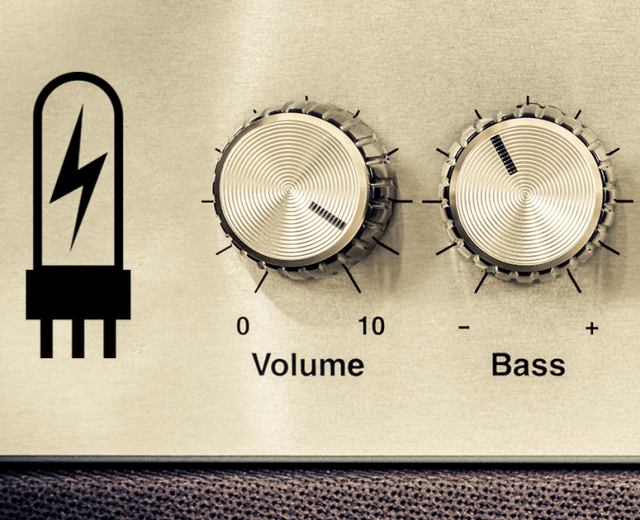hen tubes, transistors and chips coexist.
In this article we are going
to deal with
electric guitar amplifiers based on mixed or hybrid designs, those in
which different technologies such as tube, solid state and digital ones are
used to a variable extent for the same purpose: assuring a good
guitar sound.
To get an overview on the electric guitar and its amplification development in the first half of the 20th century, please read the articles
about
tube,
solid state and digital amps.
Substantially, there are four kinds of guitar amplifiers:
In this article we’ll concisely and distinctly deal with electric guitar
hybrid amps based on a:
- solid state/tube hybrid design
- digital/solid state hybrid design
- digital/tube hybrid
design
.
Solid state/tube design amplifiers
Once solid state amplification was made available (please read our article
on the
Soundsation blog), mixed circuit amps soon appeared on the guitar and bass players
market; in these projects, tubes, transistors and/or integrated circuits (ICs,
chips) were variously used in a single design. The aim has always been to get
sounds with tubes distinctive dynamic and tonal features, but reducing cost,
consumption and weight.
By the end of the 1970s, the Peavey
Deuce
e the heavy Mace amps were
among the first professional amplifiers of this kind, also significant for a decent
commercial distribution. In the first years of the 1980s the
Music Man RD series was equipped with a solid state preamplifier and a tube power
amp
, usually based on a couple or a quartet of EL34s or 6L6s. The Music Man
RD-50 was a forerunner in its preamplifier composition, designed by
Leo Fender at the time when his C.L.F.
Research was departing from being a Music Man supplier. This did not prevent
the RD-50 from housing Fender designed
Limiter
tube circuit
; it was based on a 12AX7 tube and used to compress and smooth distorted signal peaks. It’s worth stating
the
lead channel stages of this amp:
SS first gain stage -> EQ -> SS second gain stage -> tube limiter.
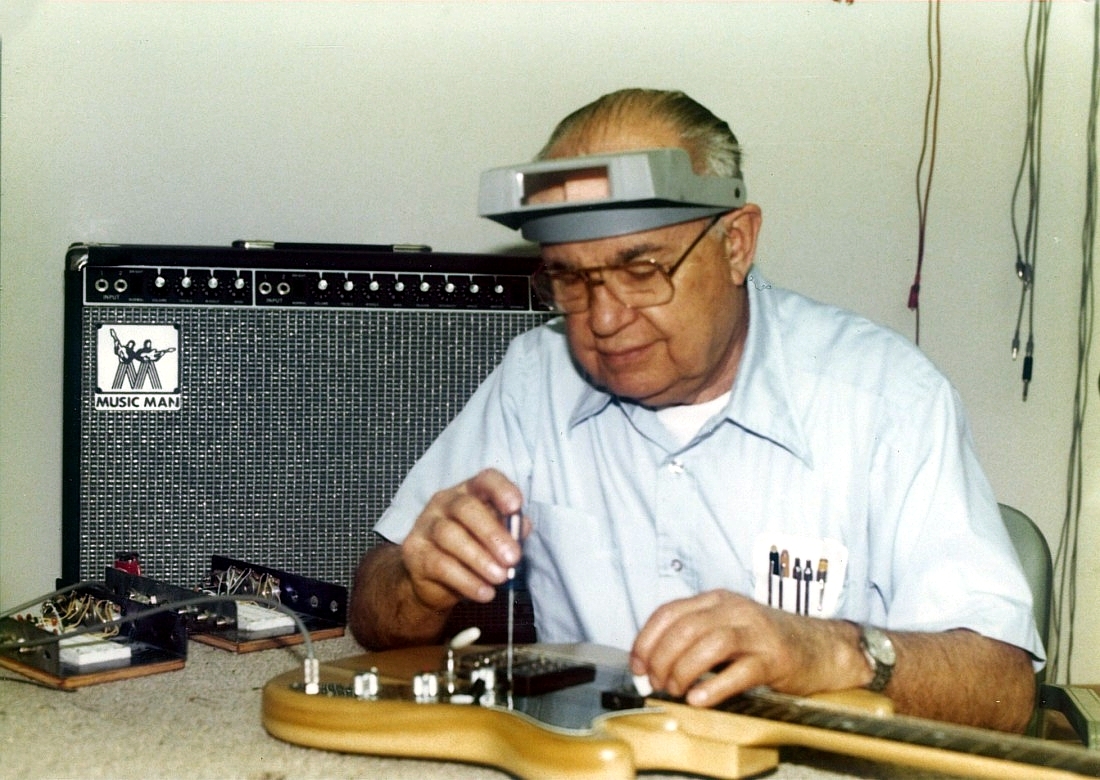
“Placebo” tubes
There are lots of more distributed and cost effective amps, such as the Marshall Valvestates, used for amateur,
semi-pro and professional purposes, until they became a standard. An
integrated circuit preamplifier and a distortion generating network of diodes are combined in the
design, while a preamping tube
warms up
the sound. This tube is sometimes ironically defined as “placebo tube” by
technicians; it’s followed by the EQ section and a solid state power amp.
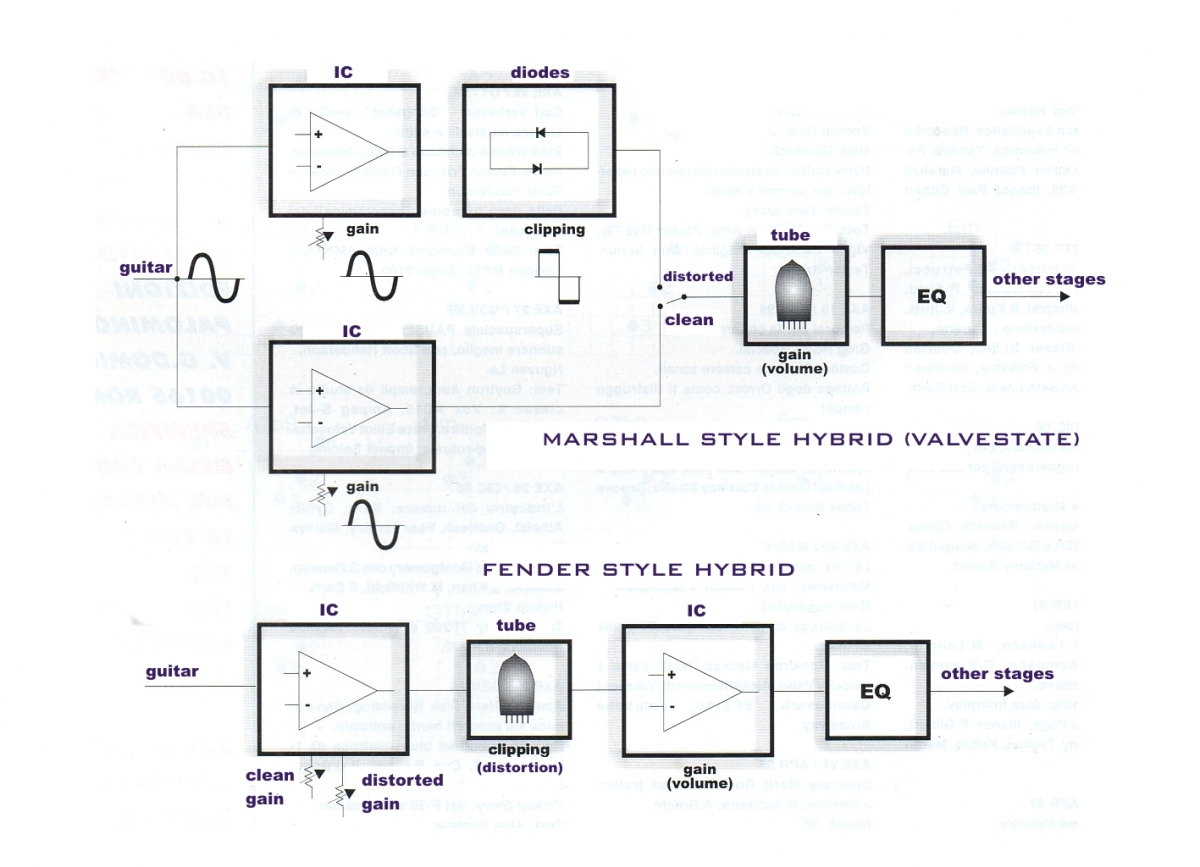
The typical Fender Bassman
derived Marshall design is thus maintaned: the EQ stage follows the distortion one (in Blackface style designs, EQ comes before the gain stage). Similar
applications of one or two preamp tubes can be often found in several amplifiers
(Vox, Laney, DV Mark) and ’80s-’90s
rack preamplifiers
(ADA, Zoom, Rocktron).
Diode or tube distortion?
Marshall implemented the distortion generating diode network – just as in
a common
distortion pedal – in well-known tube amplifiers as
the second
JCM800 series – the two
channel with reverb one –, and the
JCM900.
An alternative design, such as adopted by Fender, is based on a preamplifier
with ICs controlling a real tube generated distortion, followed by the
EQ stage and a solid state power amp.
It is worth remembering Gelf
amplifiers, peculiar for having a real tube preamplifier – in origin designed for
Who’s Pete Townshend – and a solid state
MOSFET power amp.
According to many, the difference is substantial, because the first design
sound definition has a dominant solid state nature: a while pleasant
wave clipping or squaring with just a tube tint.
In the second case, one or more tube stages define the distortion quality
with a
tube like saturation effect.
Other variations
An only functional variation of hybrid circuit is the totally tube
preamp and power amp with solid state components operated auxiliary and utility
functions: for example, channel selection, effects loop, cabinet simulated
output, and so on. This is the case of a lot of multi-channel modern tube amps.
Impact on sound is next to nothing, except for the effects loop and, especially,
for the difference between
tube or diodes rectification of AC current, being
a diode bridge rectifier more effective but
“harder” in sound according to many.
In the totally solid state field, there are a few ICs based models with
some worthwhile sections of the signal path entrusted to discrete components
(transistors) instead of ICs; this happens in
Peavey TransTube amps, for example.
A further kind of hybrid amplifier for electric guitar, though uncommon,
includes a real tube preamplifier and a solid state power amp; amps built by
Dean Markley and Legend belong now to the vintage world.
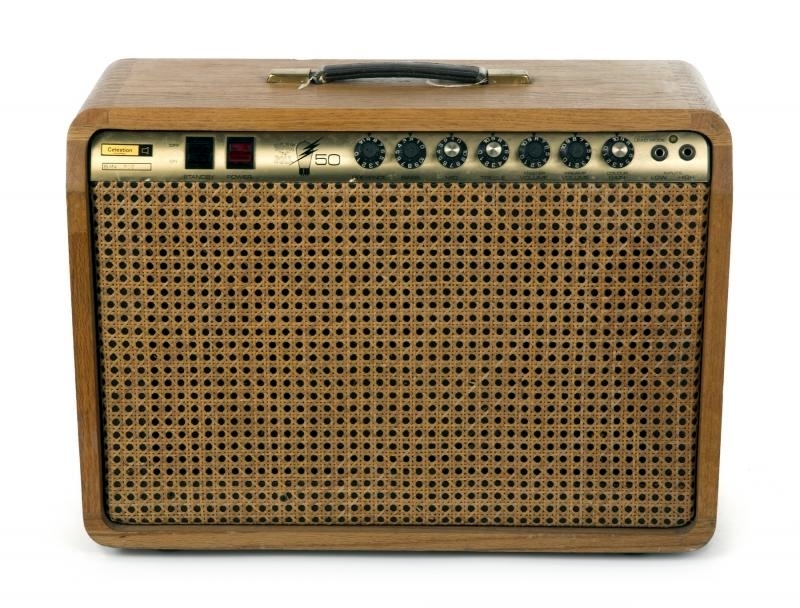
Digital/analog hybrid design amplifiers
Switching to digital/solid state and digital/tubes hybrid
circuit guitar amplifiers, there’s plenty of choice. The 1970s technology
breakthrough of
LSI (Large Scale
Integration), that is the integration of components by hundreds in a single
chip, was followed by
VLSI (Very
Large Scale Integration) and
ULSI
(Ultra Large Scale Integration). Compared to the time when I was a rocker kid,
unimaginable peaks have been achieved nowadays.
Physical modelling (or modeling
for US readers) has also arrived in the years, and it is diffusely dealt with
in a
specific article on the Soundsation blog.
Leaving out old solid state/tube models with just a simple
digital control, let’s see some kind of hybrid digital preamplifier among the
most diffused on the market.
Tubes and digits
Though there are some outdated examples of digital preamp/multieffects
with an analog solid state generated distortion (as some Zoom pedalboards and 1990s
rack preamps), the most frequent digital/analog hybrid models depend on a
preamp tube integration, and sometimes even a little 1W tube “power amp” driving
a real solid state power amp, as in the
Vox
Valve Reactor
line. In the case of the Line
6 Spider Valve
, two 12AX7 preamp tubes and two power 6L6 are used, leaving the
task of amps and effects simulation to a modelling section. This shows how
various are hybrid proposals on the market, thus making guitarist’s choice very
complicated.
Tube, solid state or digital power amps can be found in
described amplifier types. Different combinations of preamp, effects and power
amp increase musicians’ possibilities and online instruments lists.
Still talking about “hybridisation”, there also are tube
amplifiers that have a digital effects section, as the
Bogner Alchemist.
Some practical guidance
Let’s start with some words about the solid state/tube
hybrid technology. Some of the cited amps are examples of great built and sound
quality. Their designers were often searching for a precise
guitar sound idea. Some of those amps marked
an era and were used by
outstanding guitar
players
, such as Eric Clapton, Mark Knopfler and Billy Gibbons. All you
need is to be able to distinguish between cost saving purpose hybrid design (always
existing anyway) and models that are able to retain sound quality or even offer
a fine original sound. Let’s go hunting therefore: in the
second-hand market great amps are accessible at prices that are
very lower than those in their release time.
Let’s go for the best
Switching
to the digital front, it’s important to know how the signal is distributed
through digital code and analog paths in the hybrid amp we are interested in.
Sound, dynamics and perceived volume at the same power level largely
depend on the above mentioned differences.
If your approach is utilitarian and maybe home recording aimed, an all-digital, all-modelling choice is probably the apter.
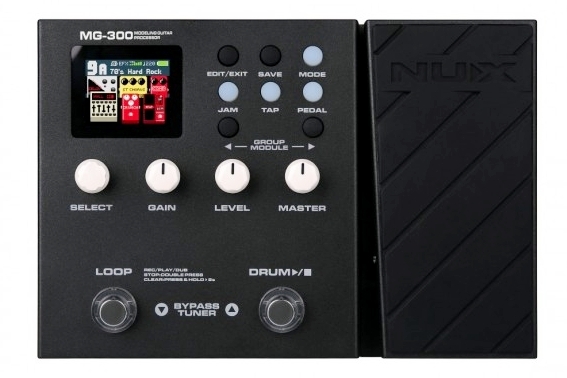
Instead, if you would like to effectively use some tube
sound qualities and in the meanwhile get plenty of amps and effects simulations,
the range opens to tube power amp models. Given the quality of today’s
physical models, profiles and A/D D/A conversions, I personally feel that a tube
power amp is much more desirable and effective in assuring the sound difference
than one or two little tubes in the preamp.
If you are using physical models and cabinet simulations it is extremely important that the power amp and the
cabinet have linear audio reproduction specs, nearer to a P.A. system rather
than to a guitar cabinet.
Anyway, let’s rely on engineers and developers, who
normally are increasingly able to carry out a satisfying guitar sound. And
while we are at it, let’s try to get the maximum of possible utilities in terms
of links, DIs, outputs, loops and so on.
New new
Once you’ll have made your choice, do not think to be
safe for long. The
GAS (Guitar
Addiction Syndrome) is always lying in wait, ready to make us desire something
newer and more useful.
It happens the same in today’s technology ruled fields
– as well as in stock quotes: a spasmodic search not only for the
new thing, but for the new new thing! It’s the case of handling
apps and Bluetooth link in more and more
practical and complete digital amps.
Recently new physical modelling amps have appeared on
the market, featuring preamp and power amp integration of
Nutube components, a kind of triode
Korg has designed from display tubes.
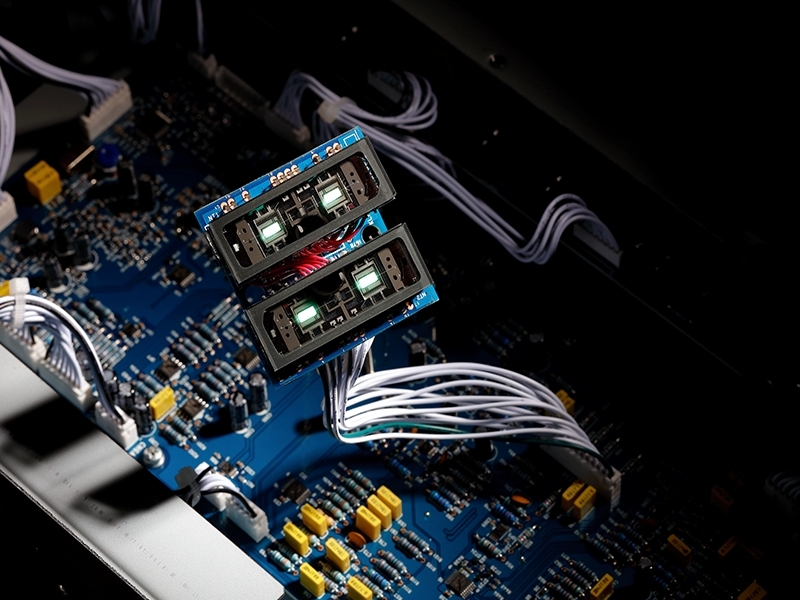
It seems they act just as a tube and last about 30,000
hours.
We’ll
wait and see…
References
Brunetti
Marco,
Ibrido, ovvero “l’immagine
virtuale” della valvola
(Axe n. 42 - March 2000, Edizioni Palomino).
